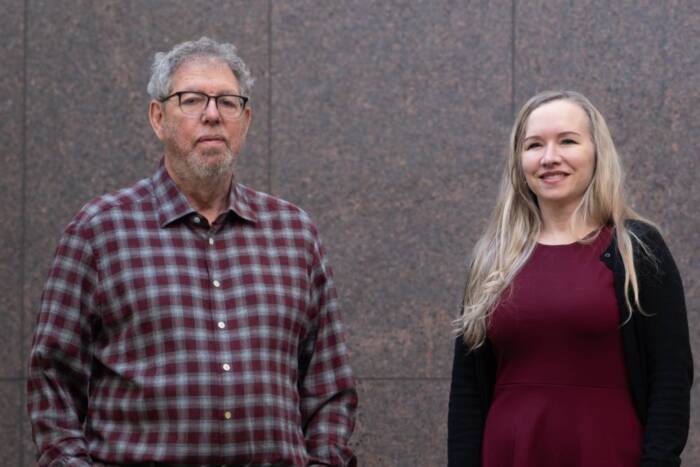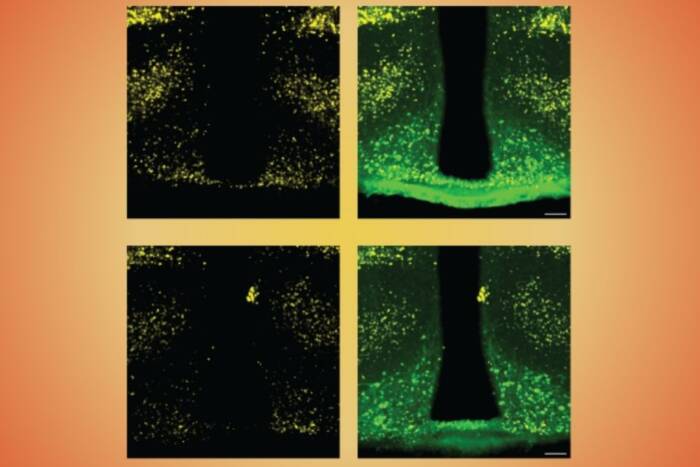New faculty member develops light-based tools to study the brain
When the brain is at work, large numbers of neurons within it interact rapidly, passing messages, sometimes across large distances. The most recent addition to Rockefeller University’s faculty, Alipasha Vaziri, devises optical tools for capturing and manipulating these interactions to create dynamic maps of neural network activity. Vaziri’s appointment to tenure-track associate professor was made in September and his laboratory will relocate to Rockefeller next year.
Working at the interface of physics and biology, Vaziri has developed a portfolio of light-based techniques that make it possible to interrogate neuronal activity within the living brain.
“Because neurons share many connections, our challenge is to image as many of them as possible on physiologically relevant time scales while observing individual cells—requirements that have been quite difficult to satisfy simultaneously,” Vaziri says. “By developing ‘tricks’ that combine physical properties of light, molecular information, and computational approaches we have been able to accomplish all three things at once.”
Physics meets neuroscience
Vaziri earned a Ph.D. in quantum optics, a field of physics that focuses on some of the counterintuitive properties of photons, the units of light, from the University of Vienna, in Austria, and conducted his postdoctoral work at the U.S. National Institutes of Standards and Technology. Later, he became interested in neuroscience and joined the Howard Hughes Medical Institute’s Janelia Research Campus as a research specialist.
“I have always been most fascinated by fundamental questions; that was the reason I studied physics and went into quantum mechanics. In the early part of my career, I was looking for new challenges and I realized that understanding the brain represented something fundamental and challenging, yet also tangible,” Vaziri says. “I hoped that, as a physicist, I could contribute new conceptual ideas and bring in techniques to address key limitations in our understanding of brain function.”
Innovative imaging approaches
While on the faculty at the University of Vienna and the Research Institute for Molecular Pathology (IMP), his most recent position, Vaziri put his background to use developing new ways to peer into the brain. One of these, called wide-field, two-photon light sculpting, makes it possible to simultaneously record many individual signals produced by densely packed neurons. Light sculpting employs a femtosecond pulsed laser source whose spectrum is dispersed, then brought back into register to generate a disk of light that illuminates many neurons only within a single plane, but not those above or below. In addition to observing the neurons, the researchers can activate them using optogenetics, a method that employs light to activate or inhibit genetically altered neurons. The Vaziri lab has developed variations on this approach that allow for single-cell resolution activation of neurons in specific spatiotemporal patterns.
Vaziri and his colleagues have also developed a second technique, light-field deconvolution microscopy, which uses views formed by an array of micron-sized lenses to generate a three-dimensional representation of neural activity at high speed across an even larger area, up to the entire brain of small organisms. Using this technique the researchers could capture the neuronal activity within a roundworm’s full 302-neuron brain during free behavior as well capture the whole-organ activity of the larger and more complex brain of zebra fish larvae. In this latter case, they were able to track how thousands of neurons responded when the fish was exposed to odor stimuli.
The Vaziri lab at Rockefeller
So far, these techniques have been used only in smaller, simpler brains. But at Rockefeller, Vaziri hopes to adapt them for use in rodents and other mammalian systems. And, by capturing every signal within an animal’s brain during an experiment, he anticipates being able to investigate the neural mechanics underlying decision-making and other complex functions. His lab will also explore new ways of applying quantum optics tools to address biological questions.
“Alipasha brings with him enormous technical expertise in the field of light-based imaging, and his presence will contribute greatly to the university’s intellectual depth by reinforcing connections between our physicists and neurobiologists,” says Marc Tessier-Lavigne, the university’s president. “His plans to continue developing and applying his inventive approaches will ultimately lead to new insights into the organization and function of the brain.”


